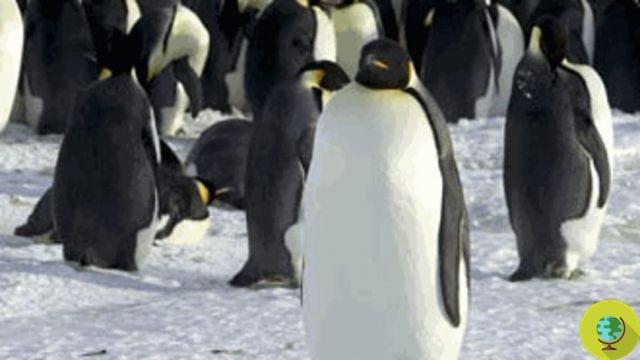
The penguins of Antarctica are twice as many as previous estimates. Satellite images reveal it
He is about to end up run over, his mother saves himI emperor penguins who live in Antartide are the double what has been estimated so far. The week starts with good, indeed excellent news. Thanks to satellite observations, the first spatial census of the species, by an international team of researchers coordinated by the British Antarctic Survey.
Do you want to know how many Penguins happily wandering among the ice of Antarctica? Ben 595 thousand copies, according to experts. Using a technique known as pan-sharpening to increase the resolution of satellite imagery, teams of scientists were able to distinguish between birds, ice and shadows, and guano.
The author and geographer Peter Fretwell of the British Antarctic Survey (BAS), explained: “We are delighted to be able to locate and identify such a large number of emperor penguins. We counted 595.000 birds, which is nearly double the previous estimates of 270.000-350.000 birds. This is the first complete census of a species carried out from space “.
I penguins, as we know, they nest in areas that are very difficult to study because they are equally complex to reach. These are areas completely inaccessible to humans, with temperatures dropping as low as -50 ° C. Thanks to the high resolution images (VHR) provided by the satellites, the researchers therefore calculated that the emperor penguins of the 44 colony present along the coasts of Antarctica are almost 600 thousand.
On the ice, the emperor penguins with theirs black and white plumage they stand out on the snow, and the colonies are also clearly visible from the satellite images. This allowed the team to analyze the 44 colonies and found 7 completely unknown.
"The methods we used represent a huge step forward in the study of Antarctic ecology because they allow us to conduct research in a safe and efficient way with low environmental impact, and to determine the estimates of an entire population of penguins," he said. the co-author Michelle LaRue from the University of Minnesota.
The biologist Phil Trathan, another co-author of the research, added: “Current research suggests that emperor penguin colonies will be severely affected by climate change. An accurate continental-scale census that can be easily repeated on a regular basis will help us to more accurately monitor the impacts of future changes on this iconic species. "
Scientists are concerned that in some regions of Antarctica, warming of the front results in the loss of sea ice, thedwells the god of the fat emperor, and this could make the northern colonies more vulnerable to climate changes. Further.
explains Trathan: “Although current research leads us to expect major declines in the number of emperor penguins over the next century, the effects of warming around Antarctica are regional and erratic. In the future, we expect the southernmost colonies to resist, making these sites important for research and conservation. "
The study was published in the journal Plos One.
Francesca Mancuso


























